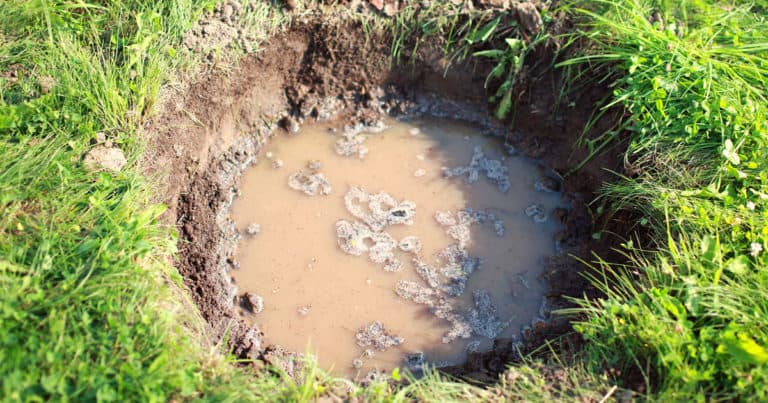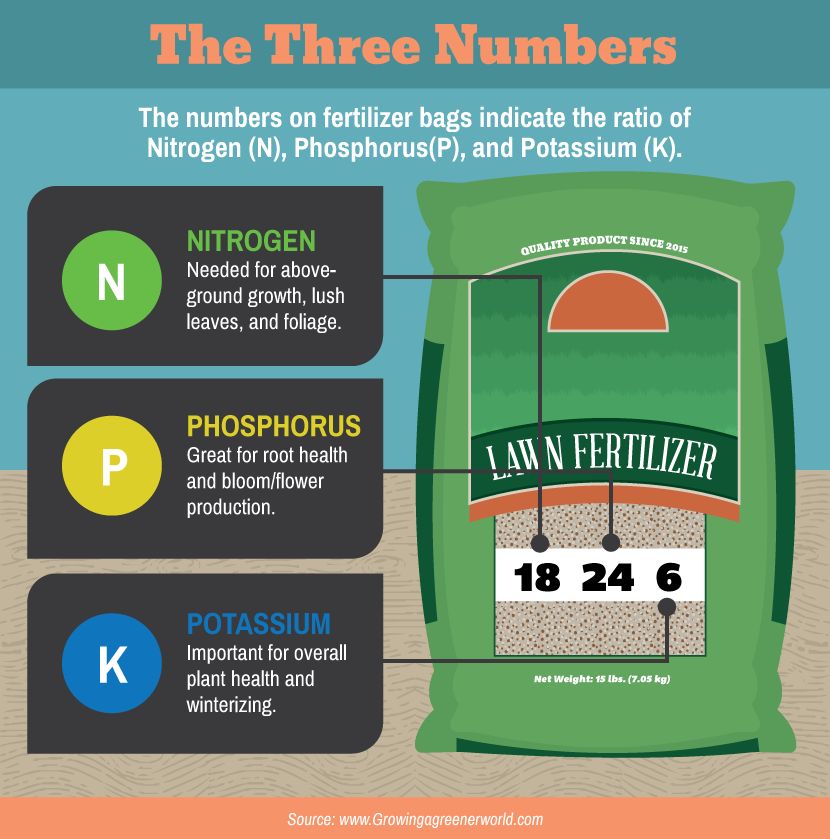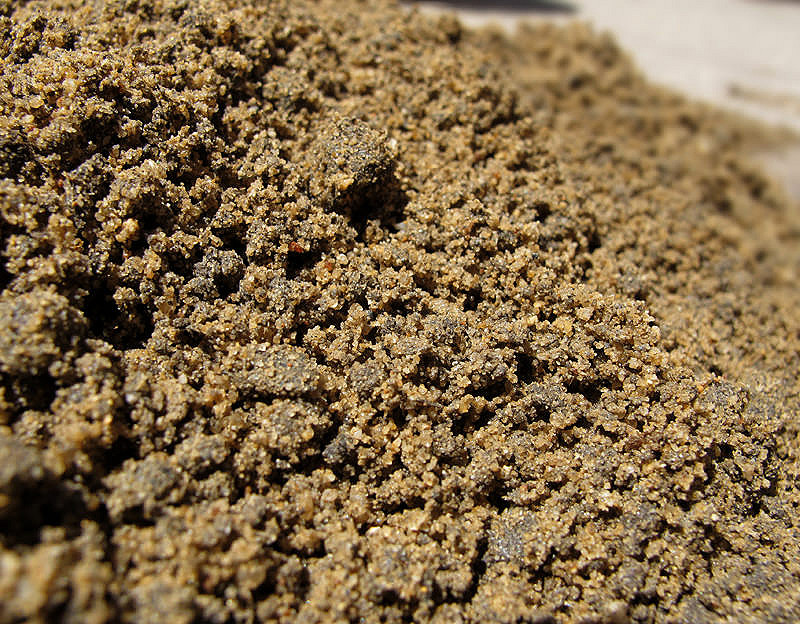Turf, like other garden plants, depends on healthy soil to thrive. Healthy, biologically-active soil has the texture and trace nutrients plants need to resist stress, disease and insect damage. If you live in the northern half of the U.S., early fall is the best time to fertilize. This gives cool-climate grasses time to "beef up" before winter. These grasses should be fertilized lightly, several times between early spring and late summer.
If you are only dealing with reviving a section of a brown lawn, then you will want to remove the brown spots from the grassy areas still alive. Thatch is a layer of decomposing plant materials that build up on the surface of the soil. But when it's thicker than 1/2 inch, it restricts the movement of air, water and nutrients. It also restricts the development of roots, which opens the turfgrass up to insect and disease problems.
Most equipment rental stores have vertical mowers or power rakes you can use to remove the excess thatch. I like organics because you don't have to be too precise. They won't burn your lawn and they're good for the soil, not just for the plants.
There's an organic starter fertilizer available from Espoma that has some added microbes which help the soil. The first time I used it I had to mail order it but I've been seeing it more at local garden center. If you don't find the starter fertilizer go with any organic fertilizer as long as it does not contain Corn Gluten Meal. Corn Gluten Meal can prevent weed and grass seeds from germinating. Lightly water the newly seeded, sodded, or plugged areas daily for at least 2 weeks to keep the top inch of soil consistently moist but not soggy. Once the grass seedlings develop and start to fill in, gradually increase the amount of water the lawn receives so the top two inches of soil is kept moist.
After the grass reaches mowing height, it's best to water deeply once or twice a week to encourage the grass roots to grow deep in the soil. After your grass seed or sod has fully established itself in the area, it's important to keep it watered regularly, especially if outdoor conditions are hot and dry. This will probably entail one to two deep irrigations weekly, depending on the weather. The grass will usually tell you when it needs you to turn on the sprinkler as it usually starts to lose its color when it's time to irrigate.
It's far better for the grass roots to give the lawn a deep drink instead of a shallow one. Most lawns need an inch of water a week to soak it down to 6-8 inches deep. Clay, silty and sandy are three other common soil types and the right combination of them makes up loamy soil. Sandy soil particles are large which causes water and nutrients to drain too quickly out of the soil. When doing your soil jar test, sandy soil will be the first layer to settle at the bottom and should make up 40% of the jar's soil.
How To Fix Poor Lawn Soil Since sandy particles are heavier, you'll begin to see that layer a few minutes after you set the jar down to settle. It's easiest to see all the layers if you mark each layer as they settle. Silt will settle on top of the clay particles and usually looks darker in color.
Your silt layer will settle in about 4-5 hours and should make up around 40% of your soil. Clay soil has tiny particles which creates poor drainage in the soil if you have too much of it. Since clay particles are the smallest of the three soil types in your jar test you'll see the layer on top. You should also have some trace amounts of organic matter floating just over the clay layer or at the top of your jar.
If you have a St. Augustine lawn, you'll want to sod or plug your bare spots instead of seeding them. First, purchase a few pieces of sod or enough plugs to cover your bare spots from your local garden center. Lay the sod pieces directly on top of the prepared soil and tamp down gently with your foot, or plant plugs in a checkerboard pattern, spaced 12 inches apart. With the vegetation killed off, it's time to till the soil. Turn over the soil to a depth of five or six inches, incorporating all of the dead organic material.
Now is the time to add organic material like humus, manure, or organic compost. The added material helps loosen clayey or compacted soil or improve the water retention of sandy soil. Teufel's Compost provides a microbially active source of organic matter, humus and other important soil builders required by turf to thrive. Add a 1/2 inch layer to lawns and gently rake over area. To plant grass seed on hard dirt, fix the hard dirt before planting the grass seed. No amount of TLC after planting will make up for poor soil prep.
You need to get air and organic matter into the root zone soil before seeding the lawn. Spring is the best AND worst time for people worried about how to fix a lumpy lawn. The ground is soft and the grass grows quickly to cover any repairs, but snowmelt-saturated soil plus traffic on your lawn add up to new bumps.
You can read more in our April lawn care experts checklist. There are tips to avoiding creating ruts from lawn mower wheels when you mow the lawn in our lawn cutting tips section as well. After that, it's all about good keeping the grass properly mowed and at the proper height, watering deeply and keeping it fed. When adequately maintained, your feet will be enjoying a green carpet of a healthy lawn for years to come. Compacted soil is a terrible growing medium for lawn grass. Soil can become compacted from foot traffic, vehicle traffic or poor soil composition—a clay-based soil for example.
Compaction can be relieved by aerating and if the cause is poor soil, top dressing with a soil amendment. Thatch is a layer of dead grass and grass roots that has accumulated on top of the soil surface. If this layer gets to be more than about a half inch thick, it begins to block the flow of air, water and nutrients. Grass roots start to grow along the soil surface rather than down into the soil. These roots become intertwined and form a dense mat.
A lawn with a severe thatch problem has little drought tolerance and becomes susceptible to a host of pest and disease problems. You may also notice a spongy feeling when you walk across the lawn. You'll know you've raked enough when you see equal amounts bare soil and dead grass stems.
Then spread a thin layer of compost over the soil and rake it in evenly. If instead of seeing dirt, you see a matted layer of roots and dead stuff, you're looking at thatch. Use the back side of a grader rake to filter the soil through the lattice holes.. Now the compost or amended soil left behind on the grass May be 1/2 inch or more where there are uneven ground.
Since only 50% of the ground is covered use the backside of the rake again to spread the layer of soil. Apply granulated powders lime with hand as it is difficult with a spreader as it is dense.PH value and fertilizer effectiveness will be immediately enhanced. You cannot over lime but be generous it's cheap., this is much like putting A nice black pepper on your meal.
Your body will absorb the nutrients considerably better. Once the grass grows to about 2 inches tall, reduce watering to once every few days. Begin mowing when the young grass reaches about 4 inches tall. After one full season, your patched area should be as established as the rest of the lawn. By then, you probably won't be able to tell the difference… unless those grubs, dogs and fungi decide to pay another visit.
Aerify PLUS breaks apart some of the clay bonds in the soil to create microscopic air space in the clay. It also adds liquefied Seaweed and Humic Acids to help generate and feed beneficial soil microbes of all types . They are dense and compacted and have poor drainage.
They stay soggy when wet, and turn rock hard when they dry out in the summer. When soils are this "tight", necessary air, water and nutrients cannot move through them. Roots are stunted and the grass is stressed, weakened, and more prone to thatch, disease, insects and even weeds. Finally, your lawn might very well be failing because you or your lawn care provider is mowing it too short.
It happens every year, yard after yard of grass that is barely hanging on to life because it was mowed too short. Mowing the lawn too short damages the crown of the plant, which is the growth center of the plant. As the grass works to recover from damaged crowns , it becomes stressed.
A stressed lawn is susceptible to weeds, diseases, and other pest invasions. Growing a full, lush, lawn at the height of 3.5 inches reduces plant stress and crowds out weed seedlings naturally. Deep, infrequent watering can help establish your lawn by allowing it to grow deep roots, which can compete against weeds. Try to water your lawn about twice a week, in the morning before the heat of the day sets in.
Lawns typically need about 1.5 inches of water per week, but that could vary based on the climate you live in and the type of grass seed you chose. Most lawns end up with patches and spots like this, where it's a little thin on the ground because there's been a lot of foot traffic over the area. If your lawn has a small bald patch, you can simply repair it by digging a sod about 20 centimetres by 20 centimetres from elsewhere on the lawn.
Simply fill the empty hole with some potting soil or even some sand and a running lawn will regenerate itself. However, as you can see by this lawn, there's nowhere that I can pinch a sod from, so I've actually bought a roll of instant turf. I'm going to cut it up and sow it in the lawn and this is a great way to start a new lawn or even regenerate an old one. Now all I have to do is simply cut this instant turf into 10 centimetre squares and plant them about 30 centimetres apart.
What that means is one square metre of instant turf can actually be used to create 10 square metres of lawn. Now at around $10 a square metre, that's really cheap. Whether you are trying to fix dead grass in your lawn or if you are starting a garden, it's important to understand your soil type. There are six soil types that differ depending where you live.
Loamy soil is considered the ideal soil type because it retains water, holds nutrients well and yet allows for appropriate drainage. Foot traffic and lawn machinery can compact the soil under your lawn, creating a difficult environment for grass roots and soil microbes. Air passages in the soil are necessary in order for water, air and nutrients to move down into the root zone. To loosen hard, compacted soil, you can use a hand-held or machine-powered aerator to remove small cores of soil. You can also strap on a pair of aerator sandals and walk around your yard. Spikes on the bottom of the sandals create tiny passageways for air and water.
Avoid future compaction by minimizing foot and machinery traffic, or by creating permanent walkways. Most people think that to have a nice lawn, you need to apply lots of fertilizer, pesticides, herbicides and water. But in most parts of the country, it's actually not that difficult to grow a healthy carpet of grass. The problem is that most turf is growing on a thin layer of poor soil that contains little organic matter or beneficial soil life. To establish a healthy, low-maintenance lawn, you need to work from the soil up.
It's worth noting that a brown lawn isn't always a dead lawn. Some turfgrasses, such as Kentucky bluegrass, go dormant during a drought. If that's the case, and its root structure is sound, it will green up following a few spring showers.
But until then, look among the brown, straw-like grass for any surviving green shoots that signal there's life in your old lawn yet. If you're resigned to the fact that less than half the lawn is salvageable, try to make it as presentable as you can through the summer, and then start over in the fall. The most effective way to reseed is to use a slit seeder. These resemble push mowers and feature circular blades that slice the soil before depositing seed directly into it. Work over the lawn in two passes, making the second application diagonally at 45 degrees over the first.
Aerating encourages healthier grass and takes care of compacted soil. All you have to do is to run a power core aerator over the lawn to pull up plugs of dirt. This opens up areas in the under-soil to stimulate new root growth.
It also slits open the soil's surface and allows nutrients and water to pass through to soil underlayers. Enough but not too much, that's a good rule for many things, including watering your lawn. You know the poor results of too little irrigation, but overwatered grass is unhappy grass too. Overwatering the lawn drowns the grass plants and can cause yellow or bare spots.

























No comments:
Post a Comment
Note: Only a member of this blog may post a comment.